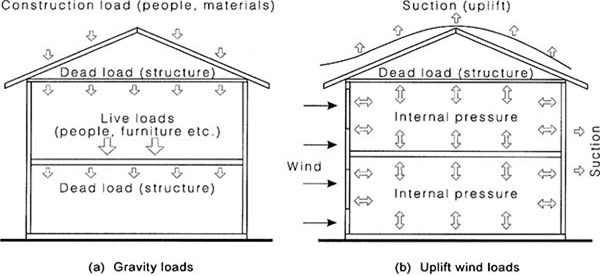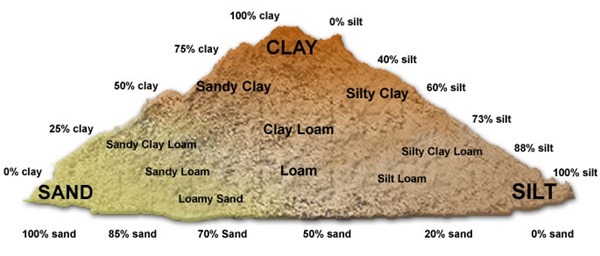Factors
Economic feasibility is one of the most important factors for selection of foundation system. We have discussed the economic suitability of different type of foundation on another article: There are many other important factors that one should consider before choosing a foundation system for a particular structure. Those factors are briefly noted below:
- Importance of the Building
- Life of the Structure
- Loads from superstructure
- Type of construction materials to be used.
- Water table level.
- Type of adjoining structure.
- Soil condition.
- Location of building
Following are the factors which affect the selection of suitable foundations for building construction:
- Loads from building
- Type of soil
- Type of structures in neighborhood
- Type of foundations
1. Loads from Building
The first factor considered is loads from building on the foundation. This load is a combination of dead load and imposed loads on the buildings. Other loads such as wind loads, earthquake loads, snow loads etc. are also considered based on location.

The quantity of loads depends on the type of structure, number of floors and material of construction. As the number of floors increases, the dead load and imposed loads also increase.
Choice of material for construction such as reinforced concrete or steel construction also has impacts on foundation. Reinforced concrete buildings exert more loads on the foundation compared to steel structures.
Based on the safe bearing capacity of structure and quantity of loads on foundation, type of foundation and its base area is calculated.
2. Type of Soils
Soil is a mixture of solid particles, moisture and air. Soil can be of many types such as clayey soil or expansive soil, sandy soil or loose soils etc. The soil near surface is called as top soil and below a depth of 300mm is called as sub soil. Generally subsoil is used as base for foundation for small buildings.
However, soil investigation should be carried out to know the nature of soil, depth of water table, type of soil, depth of different layers of soil and to know the bearing capacity of soil at different levels for large structures.
When the load is transferred from the structure to soil through foundations, the soil tends to consolidate and settlement of foundation occurs. This consolidation process can be quick in case of non-cohesive soils such as sands and can even take years for other soils.
The complete settlement of foundation in sandy soil may occur even before the building construction has been completed. Clayey soil can hold the water for longer time and thus settlement is very slow and can take years. Soil clayey holds large amount of water, and thus settlement of foundation is large in such soils.

The settlement of foundation causes cracks in building walls, beams, slabs etc. and building can even fail in case of large settlement.

The soil investigation is necessary when the loads from the building are large and the bearing capacity cannot be estimated based on type of soil condition at site.
The soil investigation should be carried out for following information:
- The nature and thickness of made-up ground/top soil above the sub-soil
- The nature, thickness and stratum depth of sub-soil
- An assessment of allowable bearing pressure
- Groundwater levels, chemicals in the ground, etc.
- Existing structures or hazards in the ground.
3. Type of Structure in Neighborhood
The selection of foundation for building construction can also be done based on the type of foundation selected for the buildings in the neighboring buildings for the same types. Based on the success or failure of foundations for such buildings, decision can be taken for the selection of foundation.
4. Types of Foundations
Types of foundation such as isolated foundations, combined footings, pile foundations and raft or mat foundations etc. based on the type of soils and loads from the buildings can be selected based on suitability and requirement.

No comments:
Post a Comment